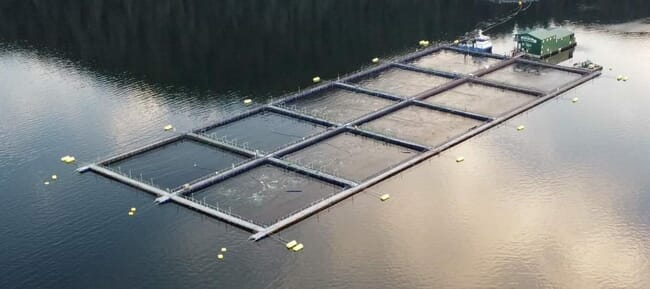
© BCSFA
Salmon farming in British Columbia has grown rapidly since the 1970s, sparking long-standing concerns about disease transmission to wild salmon. However, decades of research, including government risk assessments and studies led by fish pathologist Dr. Gary Marty, have consistently found that farmed salmon pose only a minimal risk to wild populations.
Despite this, the Government of Canada announced in June 2024 that all marine open-net pen salmon farms in BC will be phased out by 30 June 30 2029, without publishing detailed scientific justifications.
Recently, a new expert viewpoint paper published in Aquaculture, Fish and Fisheries challenges the narrative that salmon farms significantly harm wild salmon. The paper, authored by six leading fish health experts from UC Davis, Alaska Department of Fish and Game, Washington State University and Oregon State University, aims to provide a broader scientific perspective.
“Infectious disease is a normal part of all animal populations,” said Marty in press release. “Also normal is pathogen transfer among populations that interact, including wild and farmed salmon. Many studies over the past two decades have elevated these natural risks to an existential threat to wild salmon. We critique these interpretations, showing that in British Columbia, we have no good evidence that risks from salmon farm pathogens have resulted in long-term impacts on wild salmon populations.”
The viewpoint paper systematically examines claims from previous articles, clarifying misunderstandings and highlighting the difference between perceived risks and actual impacts.
“Studies reporting negative effects focus on risks, while studies finding no more than minimal effect focus on impacts. A key point is that risks are common, but population impacts are rare. High risk and low impact can occur at the same time, and studies that focus on risks do not necessarily contradict studies that focus on impacts,” Marty explained.
Dr Meyers, lead fish pathologist for the Alaska Department of Fish and Game and co-author, added, “Future prohibition of the salmon farming industry in BC, Canada, based on disease transfer concerns when there already is adequate fish health oversight, seems unnecessary.”
According to the BC Salmon Farmers Association, this ban could account for annual losses of $1.17 billion in economic activity and 4,560 full-time jobs.



